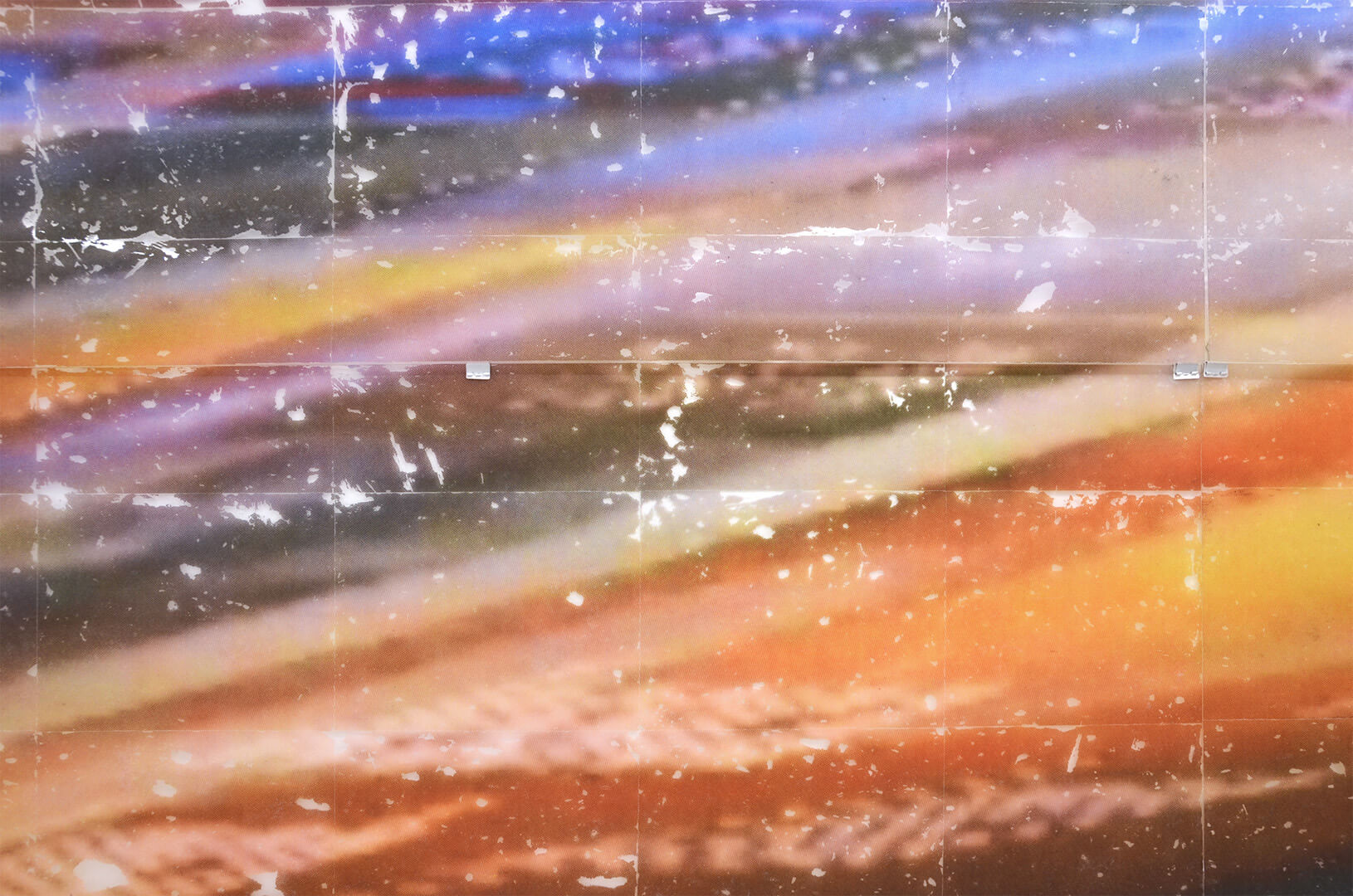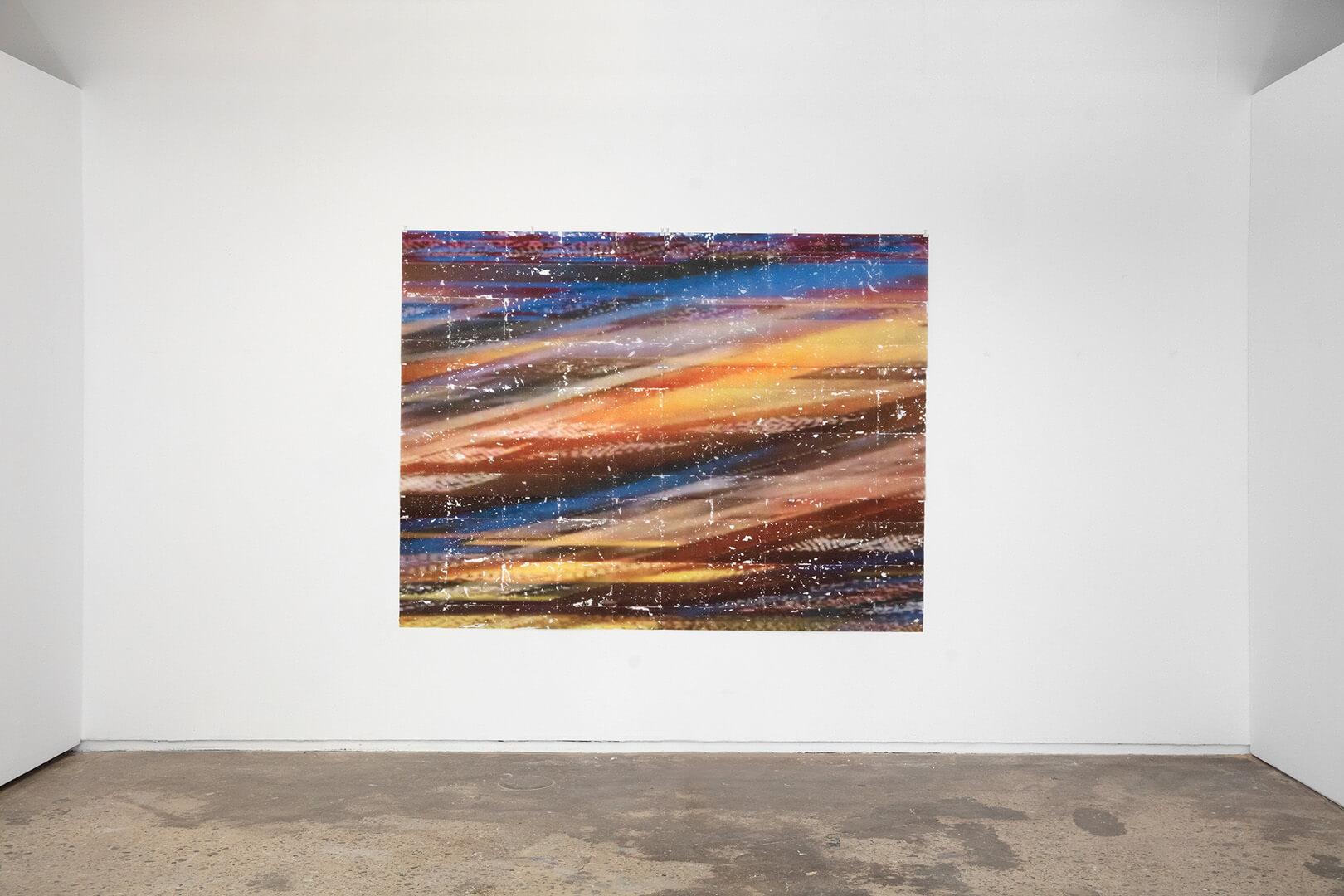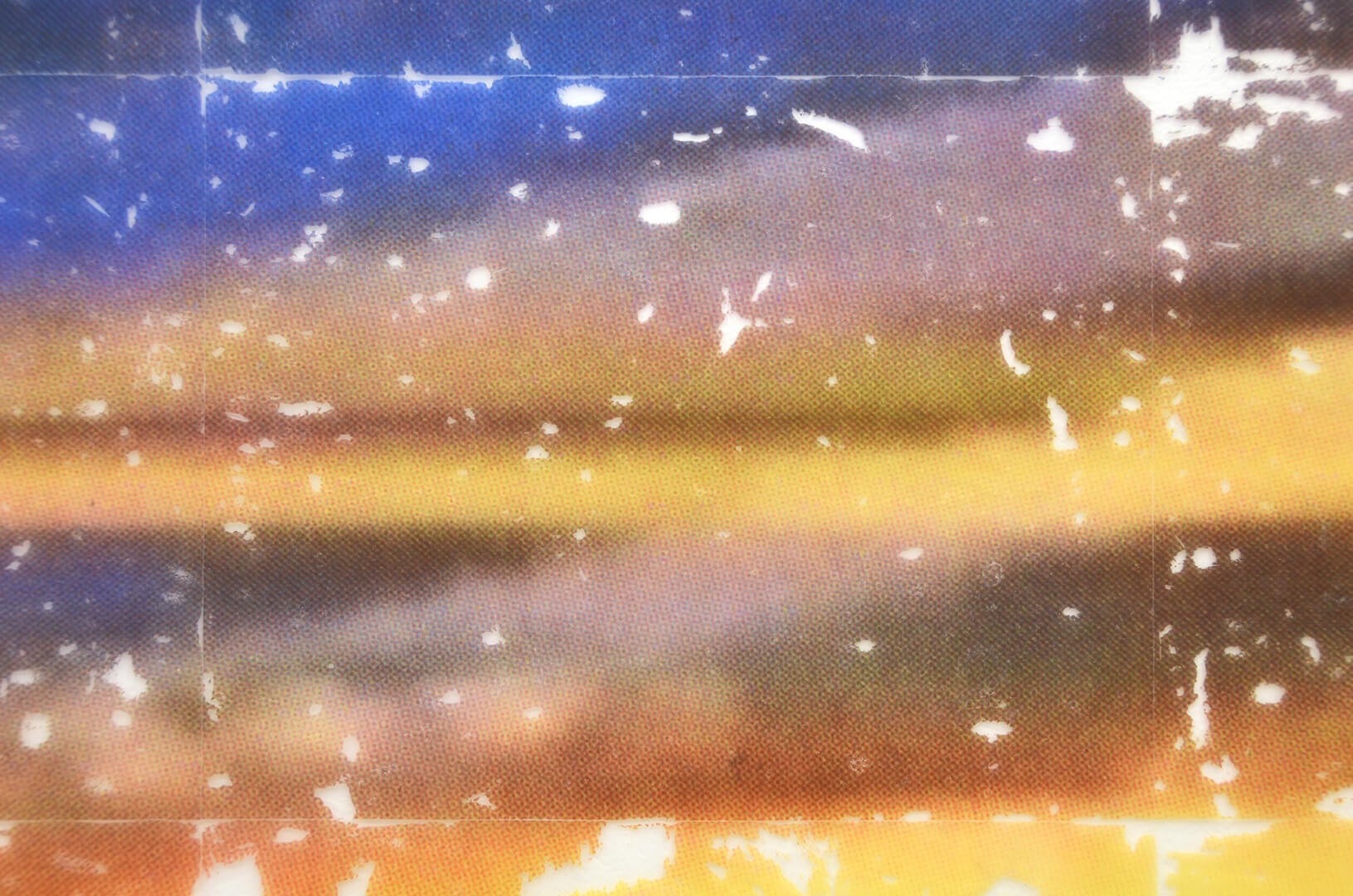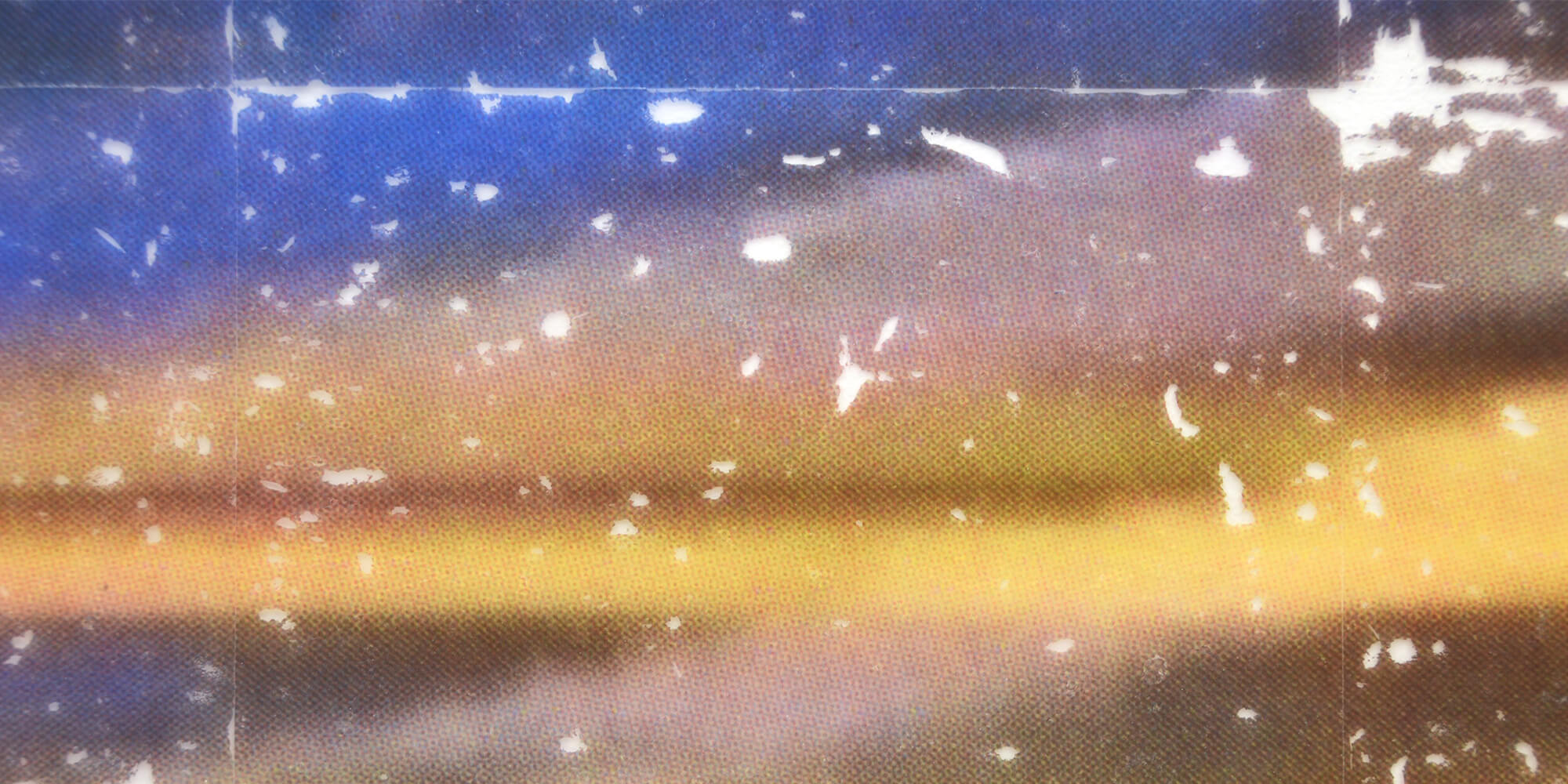
Sam Sherman
Sam Sherman
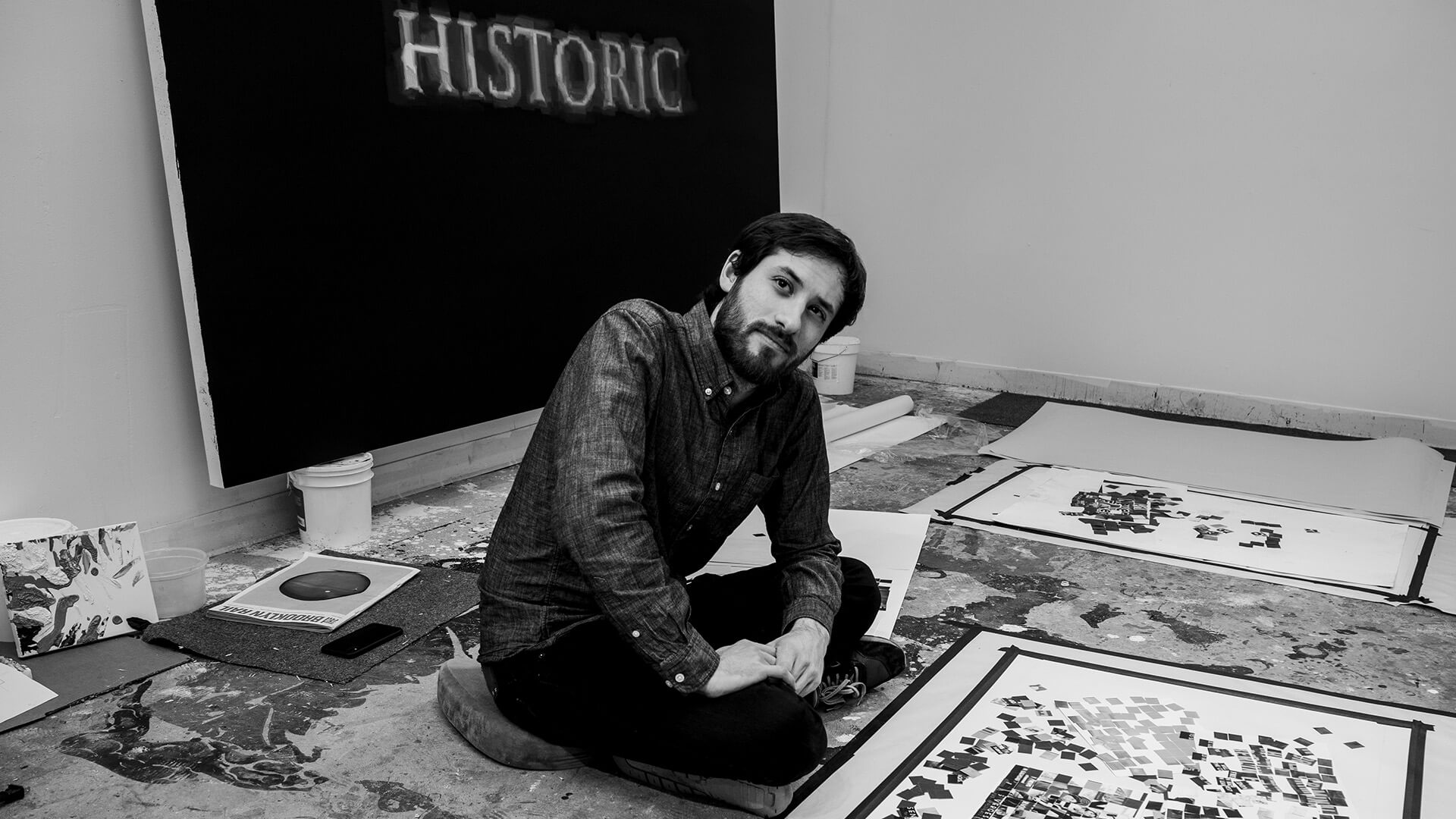
Sam Sherman
Sam Sherman (b. 1994 in Boston, MA) is an artist living and working in New York. He examines the history of the mass media’s dissemination of information, especially coverage of international conflict and violence, and its intersection with elements of popular culture and with personal and family histories. He works in a variety of media including painting, printmaking, and video. Sherman graduated from the University of Pennsylvania in 2016 with a BA in fine arts and chemistry. In addition to his work as an artist, he has also co-authored more than a dozen articles in peer-reviewed chemistry journals.
Today’s News
2020 Video 12 hr. 30 min. 18 sec.
In 'Today’s News,' Sherman aggregates the news tickers that ran along the bottom of cable news broadcasts (CNN, MSNBC, and Fox News) on April 9, 2003 when US troops infamously toppled the statue of Saddam Hussein in Baghdad's Firdos Square. Each headline enters at the bottom right corner and scrolls continuously on screen for 50 minutes before exiting at the top left. The audio results from the layering of the sound tracks from each of the 540 videos that compose the overall mosaic.
Tiles
2020 Video 17 min. 23 sec.
Data Scramble
2020 Laser toner, paper pulp, acrylic gel medium on polycarbonate 186.69 x 246.38 cm / 73 1/2 x 97 in
Sam Sherman in conversation with Joachim Pissarro
Sam Sherman: I’m not sure exactly how the COVID crisis is affecting my work because I’ve been working on videos that take a while to make. I feel like the past six months have provided input for me to use in future work, but it hasn’t shown up yet. The work that I have completed mostly looks back at the media environment in the US, particularly television news. My interest in it came from trying to understand how we got to this place of extreme polarization. And I actually ended up looking back at 2003 and the invasion of Iraq. I saw that era as a turning point for the development of the media—the extreme polarization of it.
Joachim Pissarro: In 2003, my youngest boy was just born and it was just a scary, scary moment. Adrian Piper was leaving permanently the United States for Berlin, where she has refused to come back to the US because of this—the invention of fake news. I don’t know if you get into this at all, but fake news is not a Trump invention. Colin Powell in front of the United Nations gave news about the Iraqis using chemical weapons, which was proven to be fake, to be false. There was a very big tapestry there with a reproduction of Guernica—Picasso's Guernica—and the Bush administration felt that it was too aggressive and too stirring and had it removed.
Sam Sherman: Yes, that’s really astonishing. It’s interesting to consider the ways that the Iraq War and earlier conflicts have been intertwined. One of the videos that I’m working on actually looks at how the Iraq War was discussed in terms of World War II and in a disturbing, twisted way, how the US framed it as a war of liberation akin to World War II. This video is much more personal for me. I bring in some personal family history and my great-grandparents’ experience of fleeing Nazi Germany, and then also weave in the conflict in 2003.
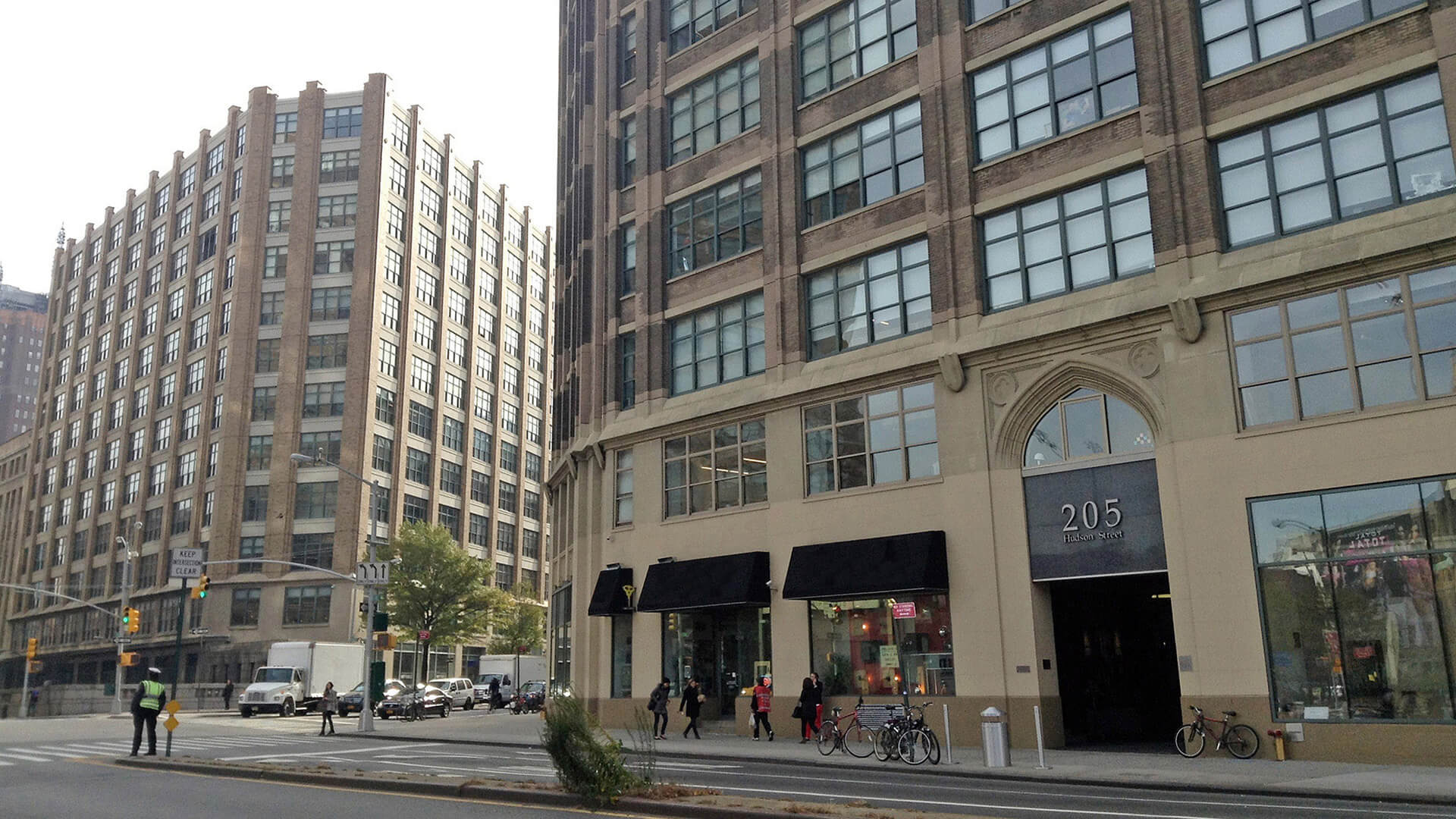
Hunter MFA
The annual Spring 2020 Thesis Exhibition for graduates of the Hunter College MFA Studio Art program represents works by 19 artist graduates of this nationally noted program. Originally planned as a series of physical presentations at Hunter’s 205 Hudson Street campus in Tribeca, but canceled due to the COVID-19 pandemic, the MFA Thesis Exhibition’s digital iteration aims to provide a new, expanded platform for young artists entering the field.
